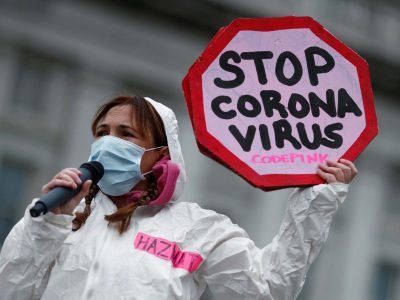Video: Canadian Death Statistics: How Is this a Pandemic?
Dr. Trozzi explores Canadian death certificates, and discusses how Covid-19 is a pandemic

All Global Research articles can be read in 51 languages by activating the “Translate Website” drop down menu on the top banner of our home page (Desktop version).
Visit and follow us on Instagram at @crg_globalresearch.
***
If you have been researching the Wuhan Virus and the global geopolitical situation, you have likely come across independent journalists from around the world, who have looked at many countries’ annual death statitstics, and noticed something unusual. What they have found is that while countries have reported many people dying from Covid-19 in 2020, the annual death totals for the countries have not generally increased. This is suprising. We have not found new profound cures for all the other things people die of like old age, heart disease, cancer, and lung disease; so if these things continue as usual, and there is a new thing (Covid) that is killing lots of people, then there should be more people dying in total. If not, this supports the observation that there has been a big push through much of the world to claim Covid-19 as the cause of death, when arguably, it was something else that caused death. There are many reports to support this, some of which are found on our site www.drtrozzi.com.
To demonstrate this, consider someone who has smoked two packs of cigarettes a day for fifty years and developed severe COPD (Chronic Obstructive Pulmonary Disease). They are very fragile, live short of breath, require numerous medications to survive, and live on supplemental oxygen. Any respiratory challenge could dramatically worsen their condition and even precipitate their death. This challenge could be inhaling some dust or other irritant, catching a cold, or even a change in the weather. When someone in this situation dies, the cause of death is COPD, or “years of smoking” if you like. The cause of their death is not attributed to dust, a cold, or a change in the weather; though these things may have been the proverbial ”straw that broke the camel’s back”. However recently we find in many places, such a person was reported as dying from covid. This is a mild example. There are many reports of deaths from cancer, heart disease, and even physical trauma such as a motorcycle accident, being recorded as “death due to covid-19”. The result of this abuse of statistics is that, though the same typical number of people are dying, more of them are being recorded as deaths due to Covid-19, and less are being reported as dying from other causes. In other words, deaths are being shifted from their appropriate and real category, to the political agenda’s category: Covid-19.
This is revealed not only by the numerous physicians and health care workers blowing the whistle on the pressure to over-diagnose Covid-19 as the cause of death; but also by the lack of an increase in nations’ total death numbers.
So let’s have a look at Canada’s annual total deaths statistics, and see if lots more people are really dying.

Here are the same numbers presented in graph form.




